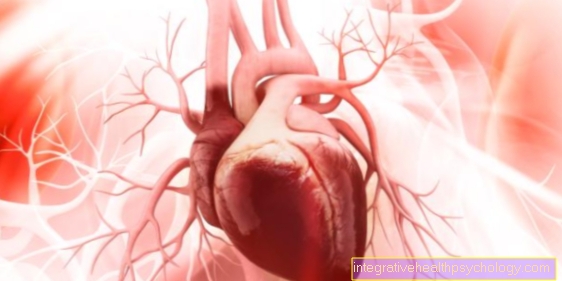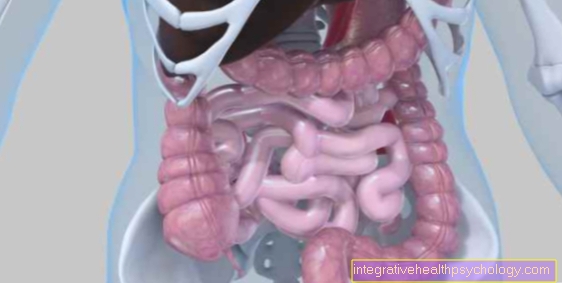Flank pain
definition
Flank pain refers to pain that occurs on the right and / or left in the lateral middle to lower back area. Basically, the symptoms can be caused by different causes. It is not uncommon for the cause to lie in the kidneys and the urinary tract. However, other diseases can also hide behind flank pain. If the pain persists or is severe, a doctor should be examined.

causes
The causes of flank pain are diverse. For example, they can be triggered by tension. This is facilitated by predominantly sitting activities or staying in one position for a long time. Dislocated vertebrae and pinched nerves can also cause flank pain.
Flank pain in athletes can also occur as a result of sports injuries caused by bruises. Flank pain can also indicate a bruise or an injury to internal organs after an accident. Flank pain is particularly typical in diseases of the kidney and the lower urinary tract.
For example, inflammation of the kidneys (pyelonephritis) leads to flank pain. This often results from a bladder infection that spreads to the upper urinary tract. Kidney stones that migrate into the ureter can also cause flank pain. These are then typically cramp-like and occur very suddenly with nausea and sweating. Ultimately, diseases of the intestine can also make themselves felt through radiating pain in the flank area.
Flank pain from tension
Flank pain that is triggered by tension is usually noticeable on both sides of the body. The tension often results from a lot of sedentary work and one-sided stress and is most often found in the back muscles. This is heavily used in everyday life and tends to cramp. The hardened muscles can cause unpleasant pain that can radiate into the surrounding areas. Flank pain can result from tension in the back area. Massages and heat applications can help relieve tension. To prevent further tension, sufficient physical activity with targeted strengthening of the core muscles should be ensured.
You can find more information on the topic here: Lower back pain
Flank pain from flatulence
Flank pain can occur as part of flatulence. In the abdominal area is the intestine, in which more gas accumulates in the case of flatulence. If the gas cannot escape, it can lead to unpleasant abdominal cramps. Depending on where the gases accumulate, the pain can also occur in different places.So it is also possible that the pain extends into the flank area.
The use of heat in the flank and abdomen area and, if necessary, anti-cramping agents can help reduce flatulence. This should also reduce the pain quickly. If the symptoms persist, a medical examination is recommended, as other causes can also hide behind the symptoms.
The aortic dissection
An aortic dissection results in a tear in the vessel wall of the main body artery. The tear causes blood to dig between the layers of the vessel wall so that a second cavity is formed next to the actual vessel opening. Depending on the location and symptoms, an aortic dissection can be very dangerous and should be treated quickly. An aortic dissection often becomes symptomatic with severe, sharp pain in the chest area and between the shoulder blades. As the bleeding continues to push through the layers of the blood vessels, the pain can migrate and spread further towards the back. A radiation of the pain in the flanks is possible.
Shingles
Shingles (herpes zoster) is a reactivated infection with the chickenpox virus. After suffering from chickenpox, the virus remains in the body and can reappear if the immune system is weak. Shingles then manifests itself as a painful rash with small blisters, which spreads exactly along the course of a nerve.
Often, nerves in the back and flank area are affected, so that a belt-like rash can occur on one side of the back and one flank. Since the rash is very painful, the patient can only hear flank pain at first before he even notices the rash. Various drugs, if taken promptly after the onset of symptoms, can help alleviate the symptoms and alleviate the course of the disease.
Psychosomatic
It is basically possible that any physical complaints occur in the context of a psychosomatic event. This means that emotional burdens, conflicts and stress express themselves in physical complaints without an underlying organic disease. Flank pain can also have psychosomatic causes.
However, if the symptoms persist, it is important that all possible organic causes are clarified before the diagnosis of psychosomatic symptoms is made. This is a diagnosis of exclusion, which means that this diagnosis may only be made if absolutely no other explanation can be found for the symptoms. A medical examination is therefore essential. In the case of psychosomatic flank pain, relaxation techniques and psychotherapeutic care can lead to long-term relief of the symptoms.
Lateral localization
Right
Right flank pain can have various causes. The pain of a kidney inflammation on the right side is particularly typical. The right flank is then very sensitive to tapping and the affected person suffers from severe pain and discomfort. Ureteral stones on the right side can also trigger the symptoms, which then usually appear cramp-like and very suddenly and are often accompanied by nausea and sweating.
Muscular tension can also trigger flank pain on the right side, as can right-sided shingles. After accidents and external violence, bruises in the tissue and muscles can also be responsible for the symptoms. In addition, the liver and intestines, which are located on the right side of the abdomen, could be the origin of the complaints. Severe or persistent pain should be clarified by a doctor to rule out serious causes.
Read more at: Flank pain on the right
Left
Left-sided flank pain, as well as right-sided flank pain, can have different causes. As on the right side, the left kidney is also located in the flank area and can also be affected by kidney inflammation. Often times, the origin of an inflammation of the kidney pelvis is an untreated bladder infection that spreads to the upper urinary tract and eventually the kidney. Burning sensation when urinating, flank pain, fever and malaise can result. Muscular tension or painful shingles also occur in the flank area and can be the cause of the symptoms. The spleen, stomach and intestines are also located on the left side of the abdominal cavity, so that diseases of these organ systems can lead to flank pain. Here, too, persistent or very severe symptoms should lead to a medical examination.
Read more on the topic: Left flank pain
On both sides
Flank pain on both sides is often caused by the musculoskeletal system and can arise, for example, from tension or prolonged unilateral loads (lying down for a long time, remaining in the same body position for a long time). More rarely, with bilateral flank pain, the kidney is the source of the pain. Kidney inflammation usually affects only one kidney and not both kidneys at the same time. However, this is possible in principle, so that bilateral pelvic inflammation should also be considered in the case of bilateral flank pain. Shingles usually only occurs on one side, so that it is less of a possible cause. If there is tension, a hot water bottle can help loosen up the muscles. In addition, massages and physical activity can alleviate the symptoms.
Learn more about flank pain on both sides.
Under the costal arch
Pain under the costal arch can have different causes. Often pinched and irritated nerves are the cause of the complaints. An intercostal nerve runs between the ribs. In the case of tension or dislocated vertebrae, the nerves can be irritated with radiating pain. This clinical picture is known medically as intercostal neuralgia. In addition, the liver is located on the right side under the costal arch, which can cause pain in various diseases.
In addition, the gallbladder is located in this area, which can become inflamed (gallbladder inflammation) or contain gallstones. The latter can get into the bile duct and cause severe, colicky pain. On the left side under the costal arch there is mainly the intestine. However, in the back of the rib area, the spleen is also located in the left upper abdomen. If this is enlarged, it can press on surrounding structures or be painful due to the tension that is exerted on the organ capsule.
diagnosis
The diagnosis of flank pain can be made very easily if the person concerned describes their symptoms to the doctor. It is then important to identify the cause of the symptoms. A detailed discussion with the doctor usually provides important information. This is followed by a physical examination that can provide further clues for the diagnosis. In addition, for example, the urine can be examined to rule out a urinary tract infection. Further additional examinations can be a blood sample and an ultrasound examination. After the diagnosis has been made, adequate therapy can then be initiated.
Concomitant symptoms
Depending on the cause of the flank pain, various accompanying symptoms can also occur:
- With inflammation of the kidney pelvis, there is usually a general feeling of illness and possibly a fever. Usually there is also a burning sensation when urinating and pain on pressure over the bladder, since the kidney pelvic inflammation usually develops from an ascending cystitis.
- In the case of tension, back pain and palpable hardening next to the spine are often accompanying.
- If the cause of the flank pain is shingles, a red rash with small blisters will appear in the affected area.
- After trauma in the flank area that causes pain, bruising and swelling may be visible. Since the possible causes of flank pain are very diverse, so are the possible accompanying symptoms. A medical examination of persistent flank pain is therefore always recommended.
When inhaling
Pain in the flank area when inhaling can have different causes. Often it is about tension or irritated nerves (intercostal neuralgia). In the latter, an intercostal nerve becomes irritated and causes stabbing pain along its course. This pain then kicks in, especially when the chest moves - such as breathing. Muscular tension can also cause pain when inhaling.
Flank pain when breathing in during exercise can also result from side stitches. If the activity is interrupted and breathing is calmer, the pain should subside again promptly.
Since the cause of the discomfort can potentially originate from internal organs, a doctor should be consulted if the pain persists.
Back pain
Back and flank pain usually indicate a problem in the musculoskeletal system. In the case of tension, dislocated vertebrae, herniated discs or irritated nerves, back pain in combination with flank pain can occur. The musculoskeletal system is susceptible to such complaints due to a lack of exercise, predominantly sedentary activities and one-sided physical strain in everyday life. Tension can be loosened with warmth and massages.
Dislocated vertebrae can be adjusted again by a physiotherapist, osteopath or chiropractor. If a herniated disc is suspected, an orthopedic or neurological evaluation should be carried out. Depending on the severity of the symptoms, painkillers and physiotherapy are prescribed, but surgical intervention may be required to rectify the incident. Physical activity and targeted strengthening of the back muscles help to prevent back pain and flank pain caused by problems with the musculoskeletal system.
With nausea
Flank pain combined with nausea can indicate different causes. Spasmodic and very sudden pain in the flank, accompanied by nausea and sweating, can indicate kidney or ureter stones. If such a stone gets into the ureter, it leads to spasmodic contractions of the same. This is very painful and will wear off once the stone passes the ureter and reaches the bladder. Smaller stones can then come off in the urine. In some cases, however, it is necessary to have the stone removed by surgery.
Kidney inflammation is also associated with flank pain and can be accompanied by nausea. In the case of gastrointestinal infections with nausea and vomiting, flank pain can also occur as a result of repeated vomiting. Since the symptoms can also have other causes and do not have to be directly related, a medical clarification is recommended.
Burning sensation when urinating
Burning sensation when urinating combined with flank pain suggests an infection in the urinary tract. Burning sensation when urinating typically occurs with bladder infections. If an inflammation of the bladder does not heal, the germs can over time ascend via the ureters to the kidneys and cause inflammation there as well. This leads to flank pain, which can be very severe.
Most of the time, those affected also develop a fever and a clear feeling of illness. Antibiotic therapy is then absolutely necessary, as otherwise complications such as blood poisoning can result. A bladder infection that does not heal by conventional means should therefore lead to a doctor's visit so that a kidney infection cannot develop in the first place.
Treatment / therapy
Treatment for flank pain depends on the underlying cause.
- Antibiotic therapy is often indicated for inflammation of the bladder and renal pelvis. A doctor's visit is therefore necessary so that the appropriate antibiotic can be prescribed. Depending on the preparation, this usually has to be taken for one to two weeks. Then the pain should no longer exist.
- For flank pain from shingles, antiviral drugs, certain ointments, and pain relievers can be used.
- In the case of flank pain due to tension, it is advisable to warm the affected area (for example with a hot water bottle) and have massages performed. In addition, sufficient exercise should be ensured.
- If the vertebrae are displaced, see a chiropractor or physiotherapist. This can also be included in the treatment of a herniated disc, but the diagnosis should first be confirmed by a doctor and the need for an operation checked.
Duration
The duration of flank pain depends largely on the underlying cause. As a rule, the pain disappears again quickly, as the underlying causes can usually be treated well.
Renal pelvic inflammation that is treated with antibiotics should cause significantly less pain after a few days and no more pain after about a week. Tension and other problems in the musculoskeletal system can be more persistent and may require the use of painkillers. If the cause was a dislocated vertebra, the pain usually disappears shortly after the adjustment.
forecast
The prognosis for flank pain is generally good, as the possible causes of the discomfort can usually be treated well. An adequately treated renal pelvic inflammation should not cause any more severe symptoms after about a week. Stubborn tension and herniated discs can be painful for a long time. It is therefore particularly important that the muscles are strengthened in order to prevent the pain from recurring.
Can that be a sign of pregnancy?
Flank pain is a rather untypical sign of pregnancy. Flank pain is not to be expected, especially in early pregnancy. Later in the pregnancy, flank pain can sometimes occur when the growing child takes up more space in the mother's abdominal cavity.
This puts pressure on the mother's internal organs and the abdomen has to widen. This can always be painful and also cause pain in the flank area. However, since other causes can also be hidden behind the symptoms that are not necessarily directly related to the pregnancy - for example an inflammation of the kidney pelvis - flank pain during pregnancy should definitely be clarified by a doctor.

-mit-skoliose.jpg)

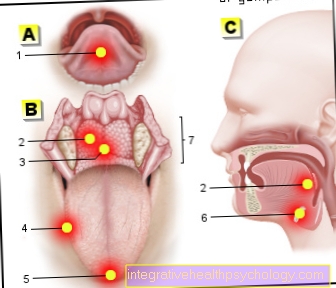
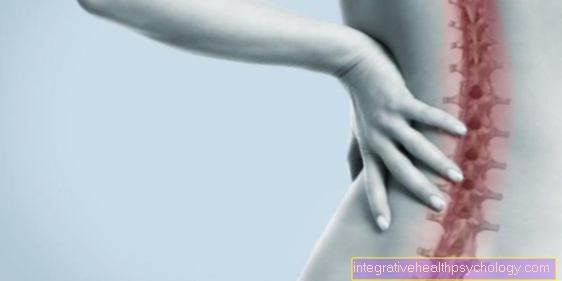

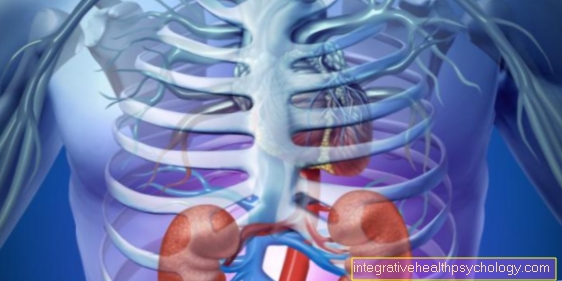

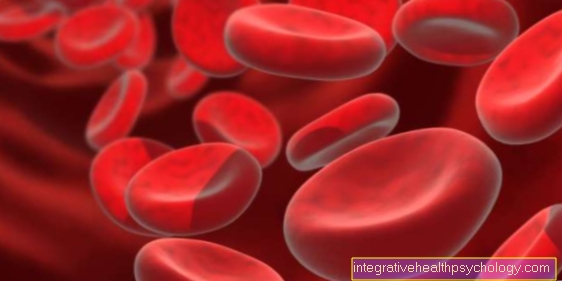





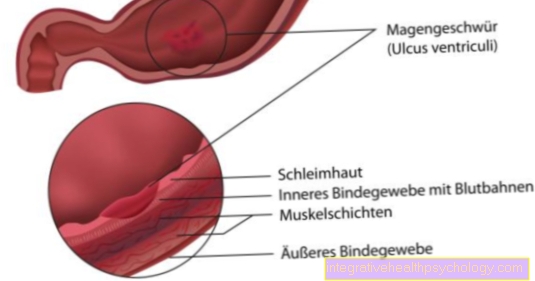
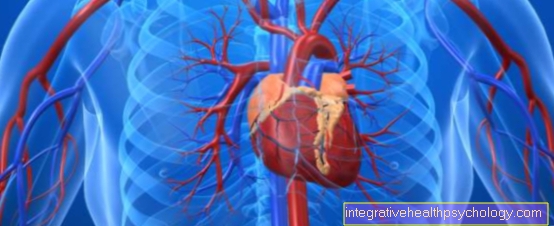
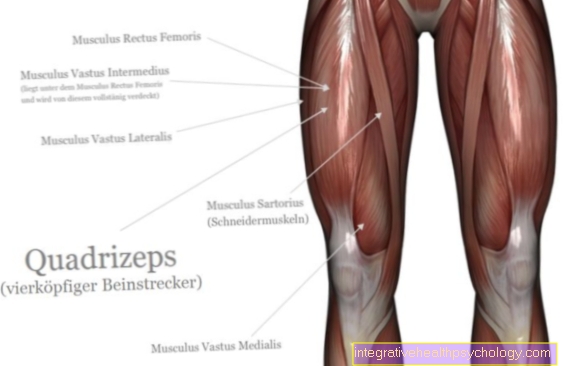

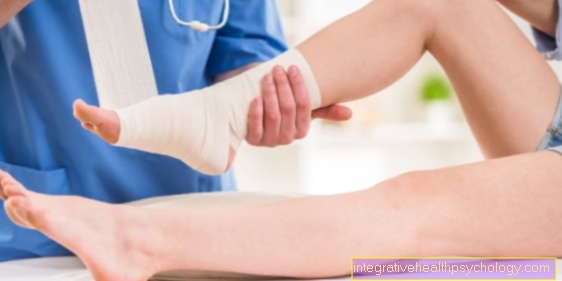




.jpg)

